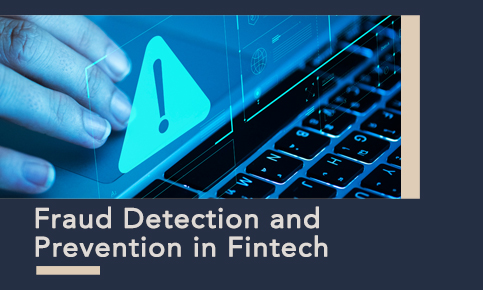Fraud Detection and Prevention in Fintech

Artificial Intelligence and Machine Learning are paving the way to a melange of financial services, products and transactions online. It is allowing a course into the digital realm that was otherwise unexplored.
The implementation of advanced technology has led to an astounding increase in businesses that specialize and embed financial transactions online. This shift has concurrently ushered an increase in online fraud that is now proving to be a challenge to every business and customer who engages in online transactions.
The loss caused by fraud is not only borne by the victim but also puts the reputation of the financial institution associated with it at stake. Moreover, financial regulators charge a hefty penalty from financial institutions for allowing their platforms to be used for fraud.
Fintech face several risks but the top areas are-
- Forging credit reports and legal documents
- Skimming debit and credit cards
- Counterfeiting of personal information
- Fraudulent payment transactions
- Money laundering
- Forging account statements for tax and loan benefits
- Synthetic identity fraud
- Loan Frauds
Fraud Detection
Fintech uses APIs to peruse credit history and ascertain customer relationships with banks to determine the scope of financial assistance. They use scoring models that involve special algorithms to calculate the creditworthiness and authenticity of the applicant.
Several indicators determine the scope of fraud like country code, geolocations, BINs, transaction amount and patterns, expenditure pattern, etc. Following are the key AI techniques used by fraud detection software-
- Data mining to signify patterns
- Expert systems to create rules for detecting fraud
- Pattern recognition to detect approximate cluster or pattern of suspicious behaviour
- Machine learning techniques to automatically identify unusual patterns in datasets
- Neural networks to learn suspicious patterns from samples
Fraud Detection through Machine Learning
There are two methods of detecting fraud through Machine Learning-
- Supervised algorithm- Organized data is fed in the system tagged with labels of fraudulent and non-fraudulent activities. The program learns the patterns between the two for interpretation on future transactions.
- Unsupervised algorithm- Unorganized data with minimal sorting is fed to the system. The program understands the data, sorts it and finds anomalous behaviours on transactions in detecting the patterns for fraudulent activities.
Fraud Prevention
Fraud detection is the first step to the prevention of fraudulent activities. Here are methods to prevent fraud-
- Face detection technology- Procure a 360-degree facial image of customers to ascertain their identity.
- Customer behaviour- It is advisable to use predictive analytics to understand customer behaviour and patterns to observe changes or suspicious activities.
- Biometric security- Biometric acts as an additional barrier to already existing security. Forging biometric is tougher and incurs a cost to fraudsters thereby preventing fraudulent activities.
- Keep your customers informed- Educate your clients on basic do’s and don’ts while transacting or availing online financial assistance. For instance, customers must never share their OTP or CVV number with any third party.
- KYC- Fraudsters are often well equipped and can forge legal documents. Hence, it is imperative to cross-check before onboarding your customers.
- Reporting process- Machine learning and neural network assist in generating reports of suspicious activities. File Suspicious Transaction Report (STR) as and when the system highlights.
An example of how fraudsters are leveraging technology
Banks allot their customers a unique number at the time of issuing a card. The first 4-6 digits of the said card number is a Bank Identification Number (BIN). This code is specific to each bank and the digits that follow are unique to each customer.
Fraudsters identify BIN and leverage technology to try combinations to ascertain a legitimate unique customer number. With the help of artificial intelligence and trial and error method, they obtain CVV and the date of birth associated with the said card number.
Fraudsters then proceed to make transactions on the card. In the case of an already issued card, the transactions are complete. If not, the banks are highlighted this fraudulent activity.
Interestingly, both the parties, banks and fraud have evolved and are leveraging technology. While technology is a boon, it is also a bane that requires a constant upgrade.

